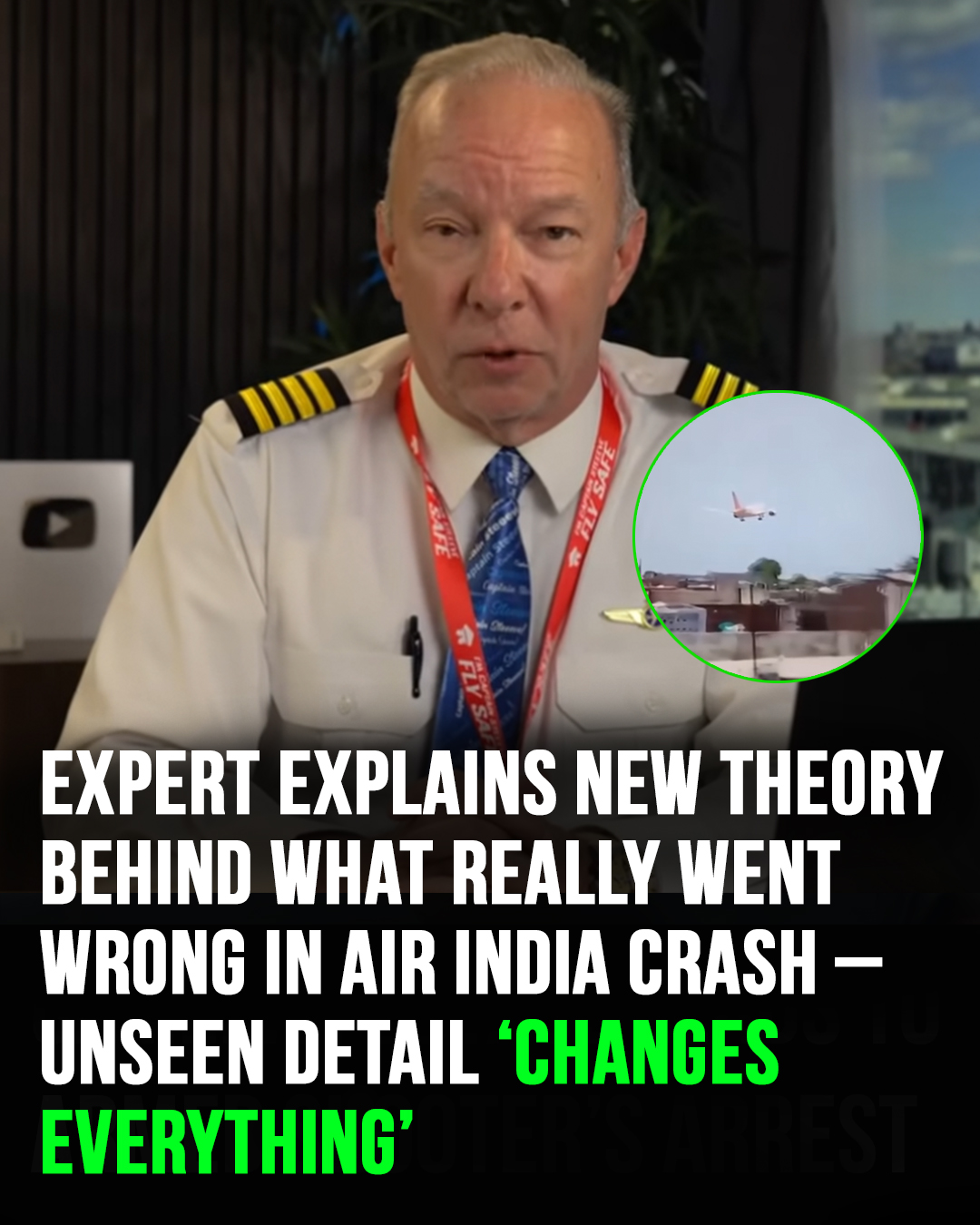An aviation expert has recently revealed a bombshell theory that could dramatically alter the course of the ongoing investigation into the tragic crash of Air India Flight 171. The crash, which took place shortly after takeoff from Ahmedabad on June 12, 2025, claimed the lives of 241 passengers and several people on the ground. Now, aviation analyst and commercial airline pilot Captain Steve Schreiber has pointed out a potentially vital clue that was missed in the initial investigations, suggesting that a dual engine failure could have been the cause of the crash.
The Devastating Crash and Its Aftermath
The crash occurred just moments after the Boeing 787 Dreamliner took off, heavy with fuel for its journey from Ahmedabad to London. In a matter of seconds, the aircraft plunged into a dense urban area, shattering homes and lives as it erupted into flames. The crash site, now a scene of unimaginable destruction, left behind only debris and tragedy.
The lone survivor, 40-year-old British national Vishwas Kumar Ramesh, miraculously survived the catastrophic event but remains in critical condition. From his hospital bed in Ahmedabad, Ramesh recounted his terrifying experience: “Thirty seconds after takeoff, there was a loud noise – and then the crash. It all happened so fast. When I opened my eyes, I was surrounded by bodies.”
As the world mourns the loss of 241 lives, the critical question remains: what went wrong aboard the flight?
Schreiber’s Revelation: A Missed Detail
Captain Steve Schreiber, known online as Captain Steeeve, has emerged with a new theory that could shed light on the cause of the crash. In a viral video, Schreiber breaks down a clip showing the final moments of the aircraft before its tragic end. He points to a small, often-overlooked detail in the footage: a dark blur behind the right wing of the aircraft. Schreiber identifies this as the deployment of the Ram Air Turbine (RAT), an emergency backup system designed to supply electrical and hydraulic pressure to the plane during extreme emergencies.
“The RAT deploys automatically under three conditions,” Schreiber explains in the video. “A massive electrical failure, a massive hydraulic failure, or a dual engine failure. Any one of these three causes will trigger the deployment of the RAT.”
The RAT is a small, two-bladed propeller mounted on the belly of the aircraft. Its purpose is to provide the necessary power to the aircraft’s systems in case of a critical failure of the primary engines or other critical systems.
Schreiber’s theory suggests that the RAT was deployed due to a dual engine failure, a possibility that, if proven, would significantly alter the understanding of the crash. He explains that the aircraft’s loss of lift – described as “mushing” out of the sky – aligns with the symptoms of dual engine failure, adding further weight to his theory.
Distinctive Sound of the RAT
In addition to the visual evidence, Schreiber also points to the distinctive sound made by the RAT when it deploys. He explains that the high-pitched squeal produced by the RAT can be heard clearly in the footage, providing more clues to its activation. “It sounds like a propeller airplane going by, or a real high-pitched squeal,” Schreiber says. “It is spinning at the speed of sound to produce the energy it needs for the aircraft.”
Schreiber is confident in his theory, stating, “I think it was a dual engine failure, I’m firmly in that camp now.” While acknowledging that an electrical or hydraulic issue could also have caused the RAT to deploy, he believes that the loss of lift during the crash points toward a more severe failure – the loss of both engines.
Ongoing Investigation and Unanswered Questions
Despite Schreiber’s theory gaining traction among aviation enthusiasts and experts, Indian aviation authorities have yet to confirm the cause of the crash. The official investigation is still ongoing, with teams from India, the UK, and the US working to piece together the events leading to the disaster.
The investigation has already recovered the black box and cockpit recordings, which will be crucial in determining the exact sequence of events that led to the crash. While Schreiber’s theory remains speculative for now, it is certainly one that warrants further investigation.
The Road Ahead
As the investigation into the Air India crash continues, the aviation world remains on edge, hoping that the recovery of the black box and other critical evidence will provide the answers needed to prevent future tragedies. Captain Schreiber’s theory about dual engine failure is a new and potentially game-changing lead, but only time will tell if it holds up under the scrutiny of official investigations.
What do you think of Schreiber’s theory? Could a dual engine failure be the cause of this devastating crash? Share your thoughts and help us spark a discussion on this important and tragic incident.
.
This article examines the recent theory proposed by Captain Steve Schreiber regarding the cause of the deadly Air India crash, highlighting a potential overlooked detail that could significantly change the direction of the investigation. As authorities continue to examine the wreckage and black box data, the world waits for answers.



